SHEV-Systems in Practice
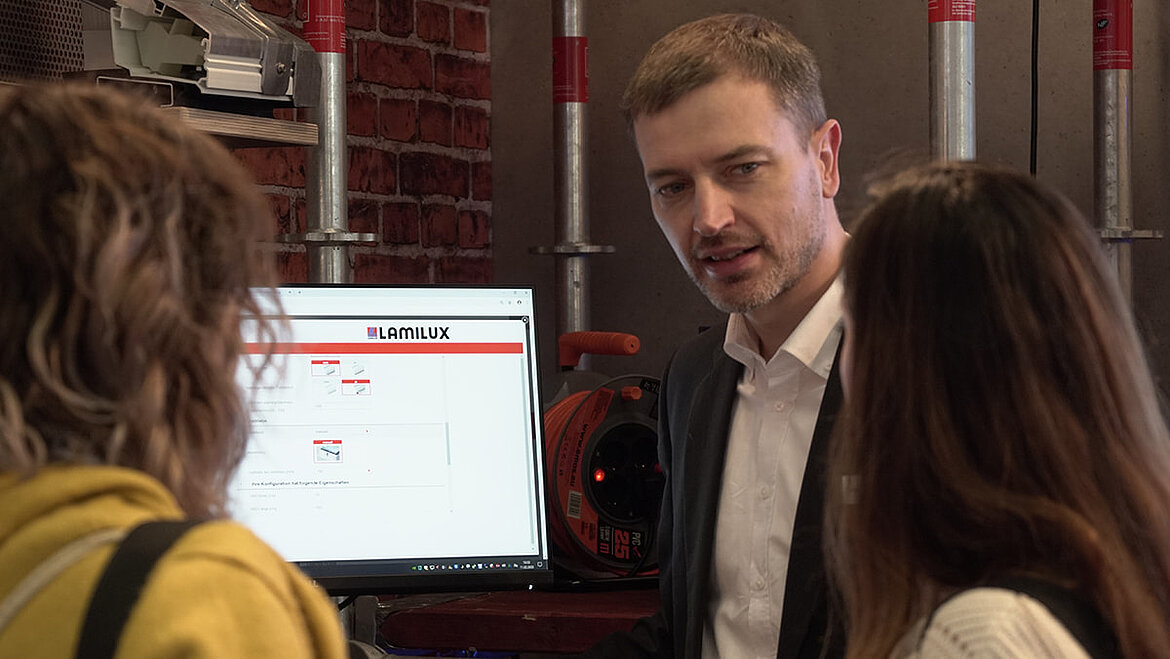
With smoke and heat ventilation systems, so-called SHEVS systems, there is always an interplay of requirements, special difficulties and possible solutions that must be weighed up in the specific case of use. After all, even the largest objects and best budgets are ultimately subject to the limits of physics. In particular, the influence of wind on natural smoke ventilation is often overlooked. But other physical limits in the field of mechanics cannot be pushed endlessly either.
General rules cannot be derived, but with the knowledge of what could be possible, the optimal solution can be found. The following major projects show typical challenges and approaches to solutions: a report on SHEV-systems in practice by LAMILUX Academy Director Carsten Ficker.
640 SHEV-Flaps on Nuovo Centro Congressi in Rome
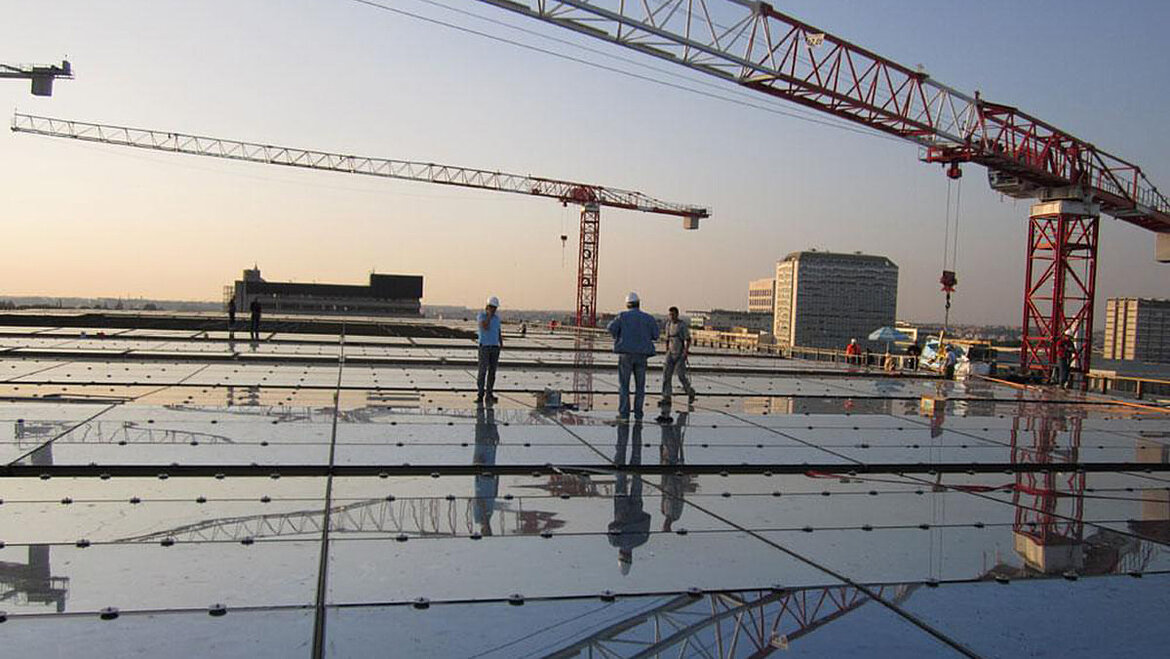
From the Roman star architect Massimiliano Fuksas came the sensational design for the congress centre in Rome, whose central element is “The Cloud”. The eponymous form is a steel structure encased in a membrane. It seems to float in a huge cuboid of steel and glass (175m x 70m x 40m) and houses the conference rooms for up to 1800 people. The ensemble is complemented by the adjoining congress hotel.
In the 12,000 square metre roof of the glass cuboid there are 640 SHEV and ventilation wings, some of which are enormous. The use of a special glazing with a very high weight per unit area was an aggravating factor in the truest sense. The largest sashes were thus around 4.5 square metres in size and weighed around 250 kilograms.
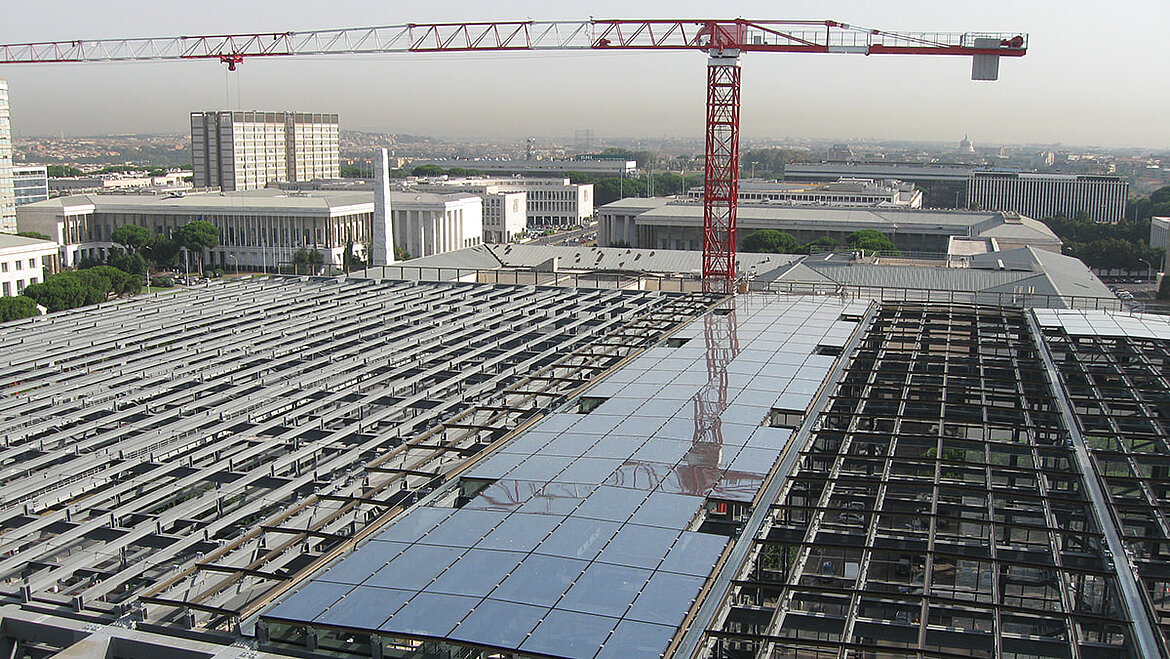
Not only the construction, but also the regular maintenance required over the service life of the building had to be considered. In addition to the enormous dimensions of the wings, this is made more difficult by the fact that the NSHEV (natural smoke and heat exhaust ventilators) in the glass roof are not easily accessible from below. Although the requirements initially seemed high, the enormous number of sashes also opened up special possibilities.
Targeted product development and testing on this scale would not be economically feasible for smaller orders. With this congress centre, however, it was well within the realm of what was justifiable, since the costs, spread over so many units, were acceptable.
Preventive fire protection at the Exhibition Centre in Hamburg
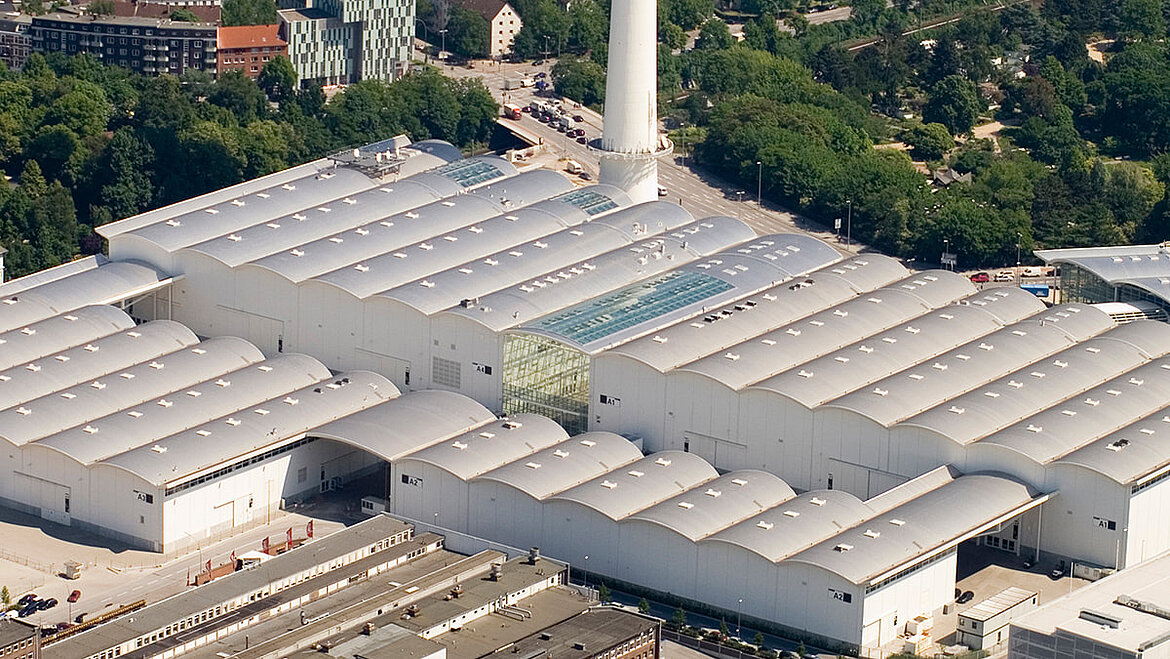
The Hamburg Messe and Congress offers 87,000 square metres of exhibition space in 11 exhibition halls. Around 40 trade fairs attract almost 12,000 exhibitors and a good 700,000 guests to Hamburg every year. The exhibition halls are covered by barrel roofs about 20 metres wide and are covered with aluminium standing seam sheets on a wooden supporting structure. A total of 315 roof lights were installed as NSHEVs, whereby two additional functions had to be harmonized with the SHEV function: In particular, the request for an adjustable sun protection system, which was to function optionally from light control to shading or even almost darkening, presented a challenge. Added to this was the multi-stage ventilation for good and bad weather with, in some cases, enormous ventilation strokes of up to 1100 millimetres.
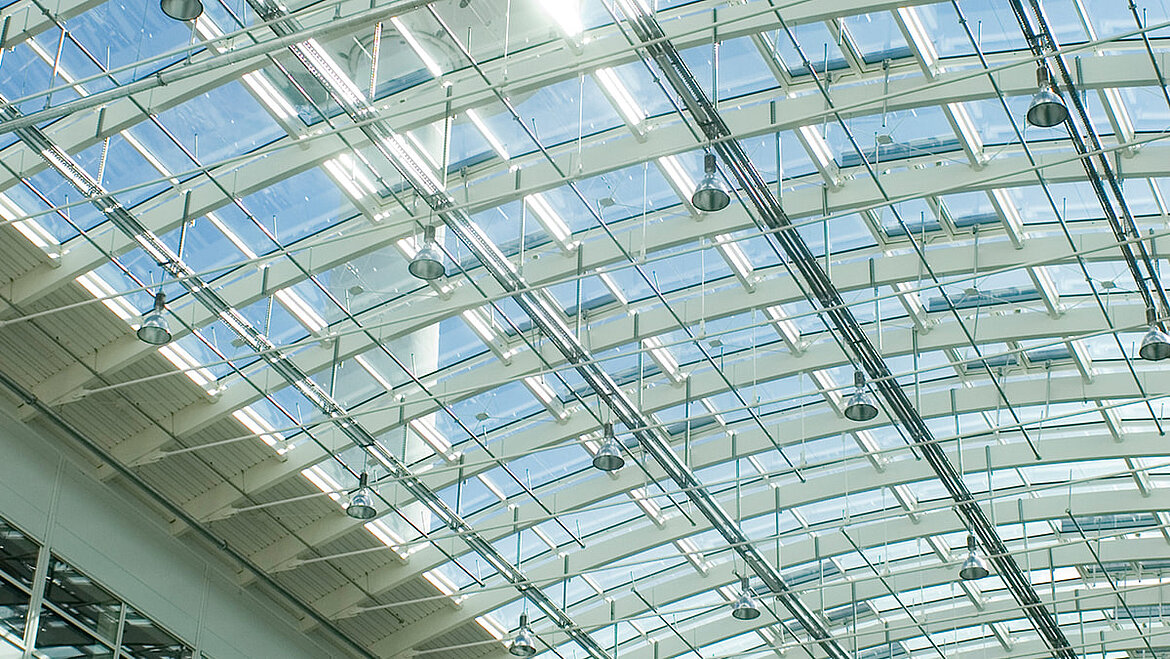
The basis was initially a standard roof light with NSHEV with the size 180cm x 250cm. A specially developed lightweight sun protection lamella system was integrated into the upper part of the dome. The ventilation was realised with multi-stage pneumatic cylinders, whose functionally relevant parts are identical in construction to those tested.
A specially developed path-bound guide keeps the locking bolts in any ventilation position exactly on the circular path of the locking lock in the upper part of the dome. This ensures in particular the difficult coupling when closing from the SHEV position with the ventilation cylinders extended.
Special constructions at the BMW-World in Munich
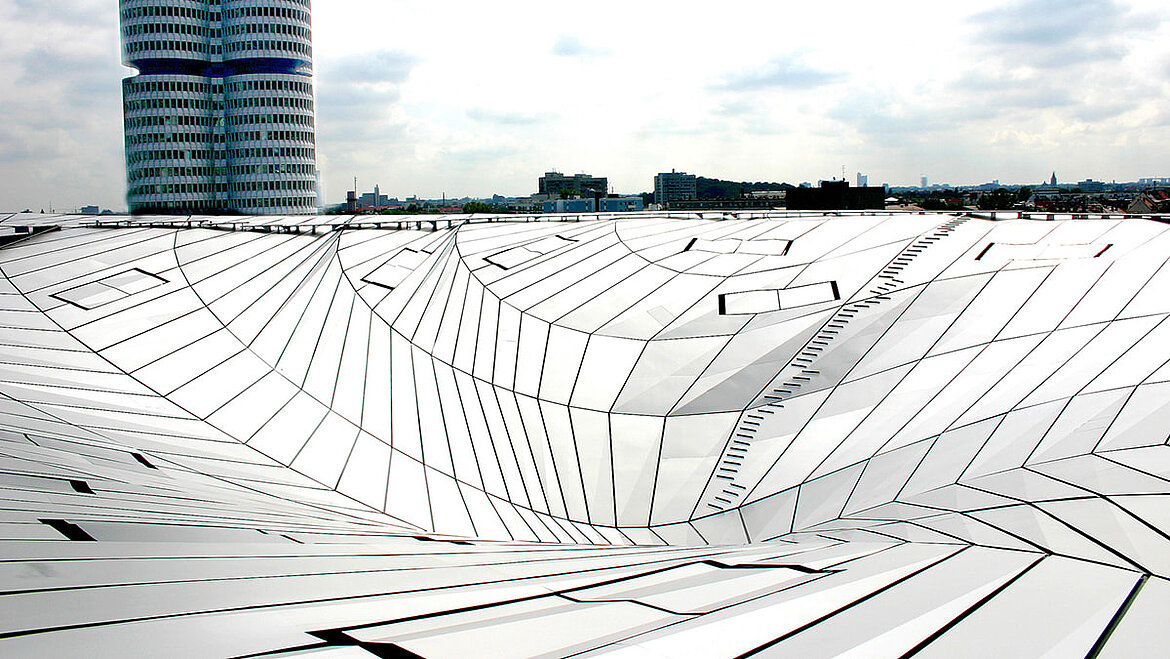
The BMW-World in Munich was designed as a meeting place for the company with its customers and guests. The extravagant architecture is part of this concept and naturally also characterizes the roof construction with the NSHEVs inside. The 16,000 square metre roof cloud emerging from the shaping double cone is supported by only twelve pendulum supports and gives a floating impression. At a height of 30 metres, an area is thus spanned that corresponds approximately to St. Mark's Square in Venice.
The planners and builders' requirement was to integrate the necessary NSHEVs into the roof, invisible from the outside. No more and no less. The basis was provided by NSHEVs specially designed for this project, which function as a tandem and open at 120°. They were embedded flush into the outer roof skin and clad with the same material. The resulting negative influences of cross-wind on the effectiveness of the smoke extraction system were compensated for by an opposite arrangement as a double flap for the best possible wind protection.
Double Flaps NRWG on the Arcades in Aachen
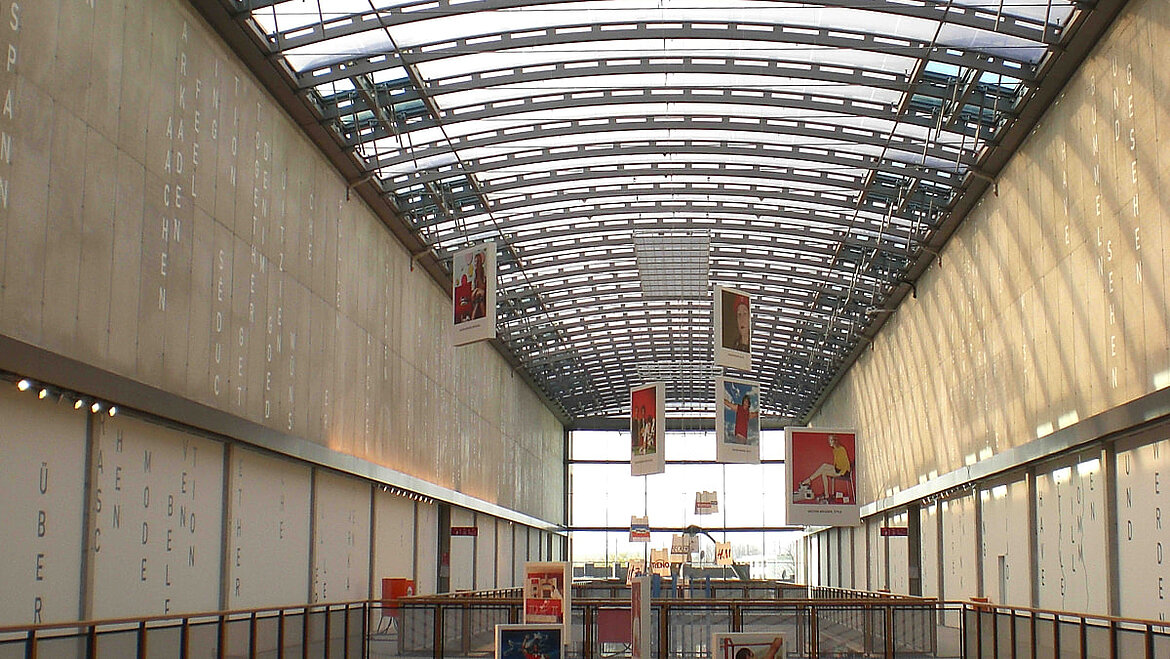
The shopping centre in Aachen Arcade houses about 50 shops and 800 parking spaces. The central mall is spanned by a translucent membrane barrel roof 16 meters wide and 113 meters long. Besides the mechanical interfaces, aerodynamic problems had to be solved. It turned out to be constructively necessary to arrange the NSHEVs at the eaves edge of the membrane arches. This required fewer but larger units and caused some problems with regard to the function in crosswind conditions. However, this was the only way to accommodate the total required smoke extraction area at the edge of the barrel alone. For this purpose, the 44 double flap NSHEVs were arranged in pairs.
However, such a 4-leaf field behaves aerodynamically differently than the sum of the two double flaps. In particular, the influence of crosswind, the required wind deflector height and the resulting higher minimum distances are difficult to estimate. These correlations were tested in tests according to EN 12101-2. As a result, higher wind deflectors were used, which in turn required larger unit distances. Only using professional tests and expert assessment can the effects of the wind on the effectiveness of NSHEVs be calculated if there is a need to deviate from the tested and standardized designs and distances.
Smoke Extraction in the Rhine Gallery in Ludwigshafen
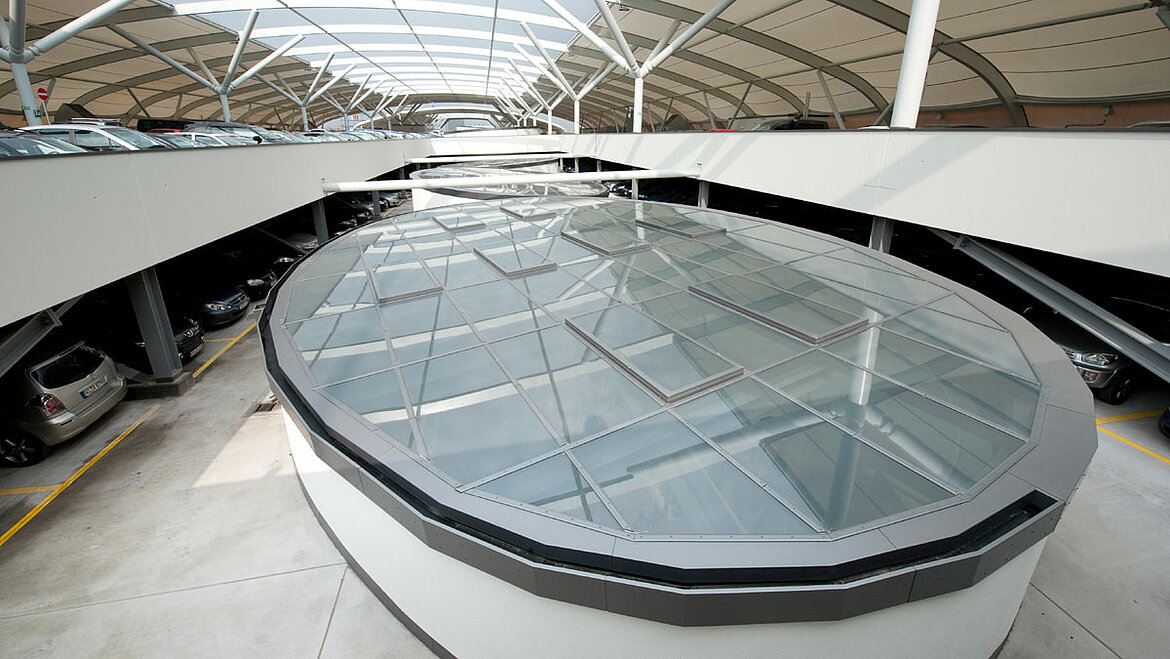
The Rhine-Gallery in Ludwigshafen is a 330-meter-long shopping mall with 130 shops and 1400 parking spaces above. More than 2,900 square meters of elliptical glass roof structures were built in 2010. They flood the mall with plenty of daylight and provide natural ventilation and smoke extraction.
The first challenge was the local concentration of the smoke and heat ventilation areas, which resulted from the architectural concept. Added to this were high visual demands and the associated desire to dispense with wind deflectors.
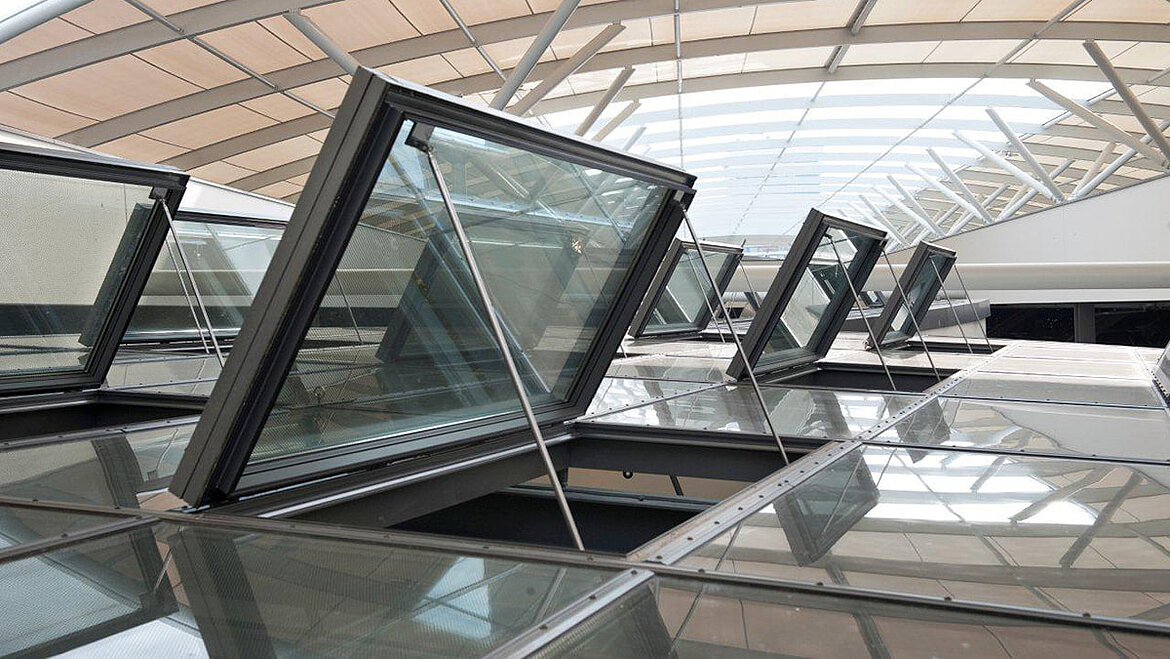
100 NRWG were integrated into the glass roof construction. A redundant compressed air system with approx. 20 bar supplies the energy for the SHEV function and enables central opening and closing without consumption of CO2 cylinders.
A complex networked control system consisting of a SHEV main control centre and four SHEV sub-control centres with priority interconnection of smoke extraction panels, BMA, BMS and manual control panels ensures effective interaction of all SHEV and ventilation openings in the entire building in every operating state. This is how preventive fire protection with SHEV systems succeeds in practice.

